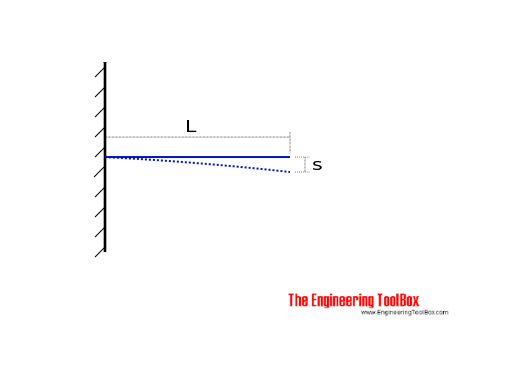Bimetallic Strips
Heat and bending of bimetallic strips.
Bi-metallic strips are subject to bending due to heat - and can be used to convert change in temperature to mechanical displacement.
Bending occurs towards the side of the metal with the lowest temperature coefficient of expansion.

Bi-metal strips
- consists of two strips of different metals with different temperature expansion coefficients
- are usually made with steel (12×10-6 K-1) and copper (16.6×10-6 K-1) (or brass 18.7×10-6 K-1) joined together (often welded) throughout the length
- are typically used in thermostats
Assuming two metals with the same shape joined together - bending of a bi-metal strip due to change in the temperature can be calculated as
s = α L2 dt / t (1)
where
s = bending (m)
α = 13 - 19×10-6 K-1 (typical aprox. 14×10-6 K-1 - check manufacturers catalogs and specifications)
L = length of bimetallic strip (m)
dt = temperature difference (oC)
t = thickness of bimetallic strip (m)
Example - Bending of Bi-metal strip
A bi-metal strip with α = 14×10-6 K-1, length 50 mm and thickness 2 mm is heated 100 oC. The bending can be calculated as
s = (14×10-6 K-1) ((50 mm) 1/1000 m/mm)2 (100 oC) / ((2 mm) (1/1000 m/mm))
= 0.00175 m
= 1.75 mm



